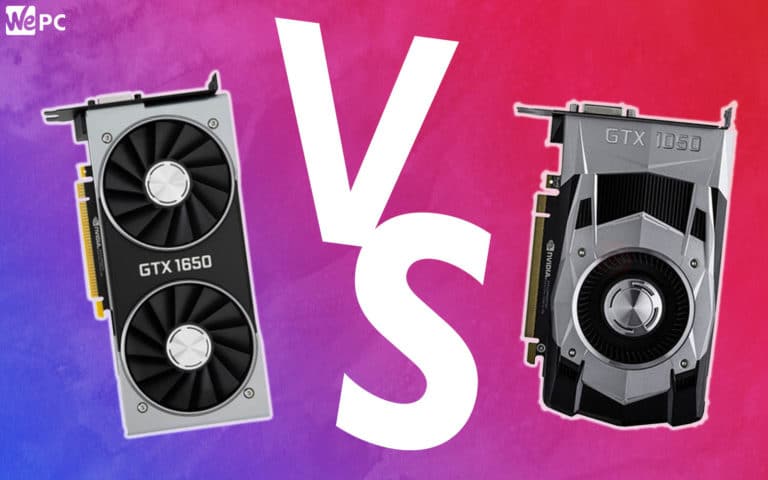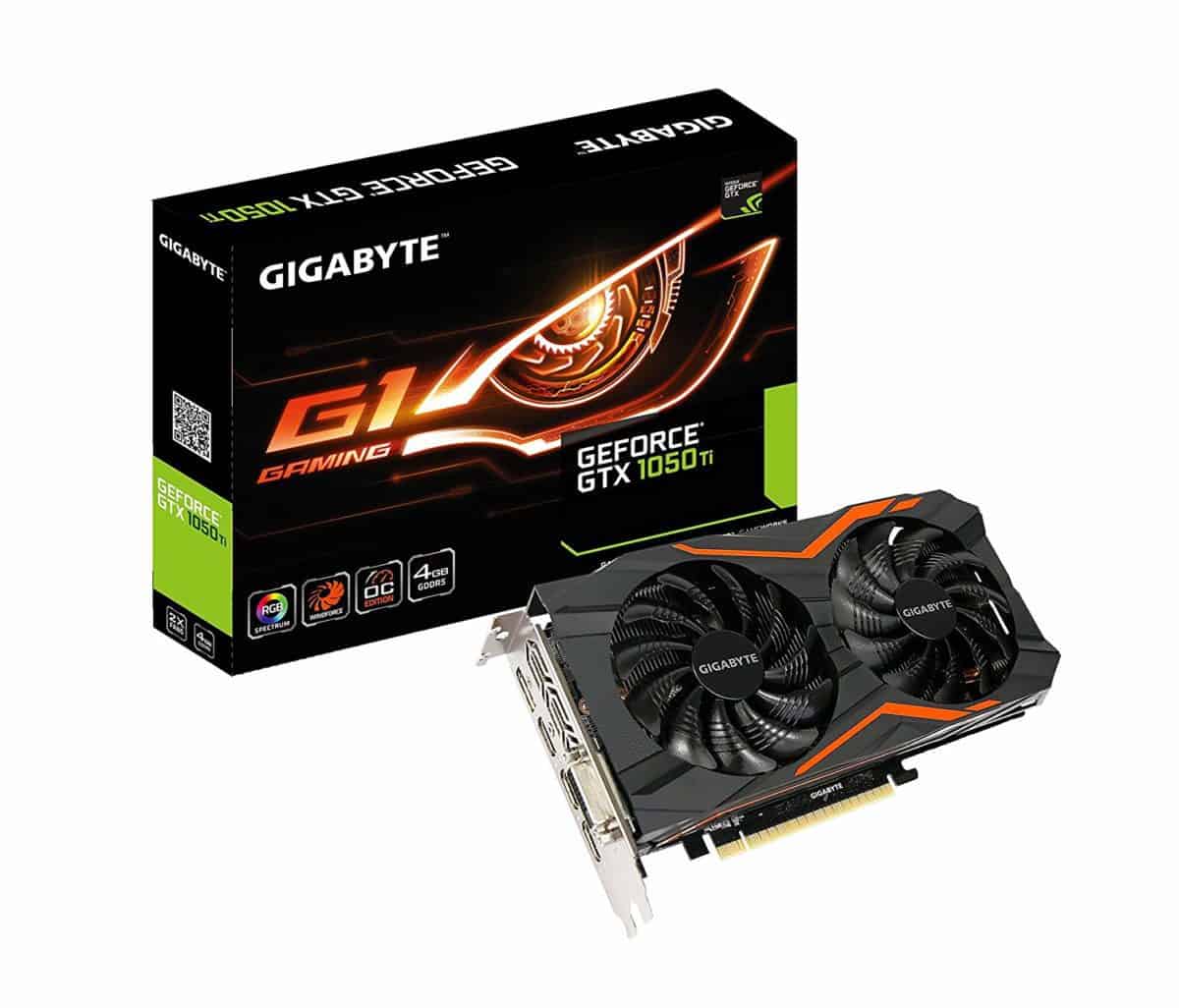GTX 1650 vs 1050 Ti
In this article, we explore the differences between Nvidia’s 10 and 16-Series GPUs by comparing the GTX 1050 Ti with the GTX 1650

Upon the release of Nvidia’s ray tracing RTX series, it was received as rather a deathblow for the GTX 10-Series, and while there’s no mistaking it was a flesh wound for the GTX family, many believe it wasn’t a full-on decapitation, and we agree.
The truth is that even in the face of Nvidia’s 16-Series – a GTX family more akin to RTX cards. The GTX series is more alive than ever and still used as a counterpoint for putting the 16 and 20-Series GPUs through their paces, and that’s exactly what we’ve done here.
Architecture
Even though the 1650 is an entry-level unit and the 1050 Ti is decidedly mid-series, it’s hard to ignore the 16-series’ superior architecture. The 1650 is the product of the TU117-300-A1 variant of Turing microarchitecture. It’s packing 896 CUDA cores, and due to some being dedicated integer cores that enable simultaneous administration of integer and floating-point objectives, they’re said to offer 50% enhanced shading performance.
The 1050 Ti is a reiteration of the standard GTX 1050 but built using the GP107-400-A1 Pascal variant, so it’s not so far removed as to have a different architecture. Not quite as core-heavy as its 16-Series counterpart, featuring 768 in total, it’s also running a little light on other architectural components. The Ti sports 48 texture units – 8 less the competition – and 6 SMs to the 1650’s 14.
The 1650 also boasts 1.4 billion more transistors than the Ti, as well as faster base (1485MHz vs 1291MHz) and boost (1665MHz vs 1392MHz) clock speeds, but both GPUs feature PCI-e 3 bus interfaces.
Cooling
Pulling a minuscule 75 watts, these cards are super energy-efficient, so they run pretty cool. There’s even a Palit KalmX 1650 model that uses a series of nickel-plated fins and heat pipes connected to a copper heat sink that requires no fans on-card whatsoever. That’s right! It’s passively cooled.
The 1650 has a thermal capacity of 92°C and a throttling function to prevent it from ever going too far into hazardous territory, granting your card a long and happy life, and ensuring your GPU investment was worthwhile. Idling at around 30°C, at roughly 45dBA, and stabilizing under load between 60 – 70°C at a minimum of 45.8dBA, you’re in for a pretty chill ride.
With a decent fan curve, the 1050 Ti should idle around the same 30°C zone as its 16-Series challenger, and under load, you’re looking at roughly the same 60-70°C. This thing doesn’t even draw power through its 6-pin connector, so it shouldn’t throw out enough heat to hit anywhere near its 97°C capacity. Forget custom loops if you choose this card. Even if you plan on undertaking some low to moderate level OC-ing, your fans should be able to handle the situation.
Dimensions
Overall size will vary from model to model, but as far as Nvidia issued dimensions for these GPUs go, the 1650 has the larger die size at 200mm2 but is the smaller unit. The difference is so negligible, though, that it won’t make a big difference in your case.
Measuring 4.37” (H) x 5.1” (L) x 2-slot (1650) and 4.4” (H) x 5.7” (L) x 2-slot (1050 Ti), both of these GPUs are actually pretty small, the 1650 remarkably so. If you’re working on a micro set up or have an already bustling regular or large case, these cards aren’t going to cause a fuss. There are, however, models of 1650 that can be as long as 9”, so make sure you run through the specs with a fine-tooth comb before buying anything.
Resolution and Frames Per Second
1080p
During 1080p gaming on the highest settings, the 1650 is definitely the faster, more capable card. There are pretty slim gaps between them for some titles. During CSGO, for example, the 16-Series GPU will only perform about 8% better in terms of frames per second than the Ti. Other titles, such as Fortnight allow the 1650 to really breathe as it reaches for the 30% differential.
Across a wide selection of titles, it should be noted that neither of these cards managed to crack a 60fps average, but, settling in the 50s, the 1650 still manages to score a 1080p victory by an average of 17.8 frames, a 31% difference.
1440p
These cards aren’t particularly primed for 1440p gaming. Average frame rates per second plummet to the low 40s for the 1650 and just shy of 30 for the Ti. All things considered, the 1650 maintains its 31% lead and captures the 1440p battleground as well.
4K
Neither of these GPUs does an excellent job of shouldering the 4K pixel-load. The Ti falls below the 20fps region, and the 1650 settles at around 25fps, once again, clinching a 31% victory.
Ray Tracing
Hardware ray tracing is unfortunately out of the question for both of these GPUs, so you may want to save up a bit more for the full RTX works. You could try and use Nvidia’s ray tracing software to turn on the general ability in GTX GPUs but they’re really going to struggle under the intensive RT workload. Even if they didn’t, it’s never going to be as breathtaking as the experience dedicated RT cores provide.
VRAM
The GTX 1650 we’ve been chronicling in this furious GPU conflict has a 4GB GDDR5 memory, but if that doesn’t quite float your boat, you can also find them with a 4GB GDDR6 memory type. It’ll bump the price up, but the advanced buffer enhances bandwidth, and memory speed. The switch will also cost you some case real estate as they tend to run ever so slightly longer.
Ignoring that 1650 variant for the time being, the 4GB GDDR5 original has a 128-bit memory bus, 128.1MHz bandwidth, which all adds up to a combined memory frequency of 2001MHz or an effective rate of 8GBps.
Similar to the standard 1650, the 1050 Ti has a 4GB GDDR5 memory, the same 128-bit memory bus, but lags behind that special Turing architecture in terms of bandwidth, offering 112.1GBps in total. That said, it’s only 1GBps behind the 16-Series card in effective speed with a max frequency of 1752MHz.
Verdict
The GTX 10-Series may indeed not be dead, but the 1050 Ti is certainly in need of a few bandages and some TLC. The 1650 came out ahead and showed us that the 16-Series does show vast improvement over their corresponding antecedents.
It’s about as basic as Turing architecture comes, but if you want in on the Turing arc, it’s a cheap ticket that offers commendable performance for gaming in 1080p.




